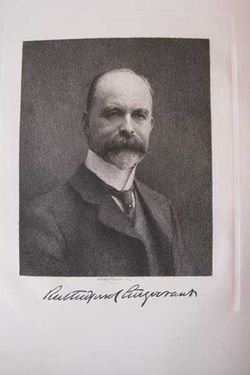


So kudos to Edward Rutherfurd for proving he can tell a story on this side of the Atlantic that is as exciting and historically illuminating as his great tomes of the British Isles. Strong common threads run through this tightly knit chronicle, closing a 300-year loop with a compelling and satisfying payoff. And while the author is faithful to the formulaic approach that has served him so well, I found myself swept up as much with the Master's as with the historical content - a truly gripping and poignant series of tales of love and loss through generations which, if at times melodramatic, was never maudlin. Rutherfurd - and the Master's - careen through war and peace, crime and corruption, boom and bust - especially boom and bust - painting a vigorous portrait fitting for New York's larger-than-life image.

This is partially the result of a focus on one fictional family - the Master's - with not much more than cameo appearances from a short list characters whose paths cross the Master clan from generation to generation, bridging all the way from Peter Stuyvesant's 17th century New Amsterdam to the summer of 2009. But if the content is light, especially compared to Rutherfurd's massive two-volume "Ireland" saga, he makes up for it with an extraordinarily empathetic cast that is developed more carefully, with greater impact, than in his previous works. It has to be impossible to capture New York in a single volume, and despite a full 880 pages in hardcover, the breadth of New York's sometimes sordid, sometimes-noble, and usually triumphant past is reduced to only fleeting snapshots of the actual events.

If Edward Rutherfurd's "New York" is not as sweeping as his epic "London", or as historically fascinating as the classic "Sarum", it is a no less enjoyable read: a vibrant, swashbuckling snapshot of New York's City's rich and colorful origins.


 0 kommentar(er)
0 kommentar(er)
